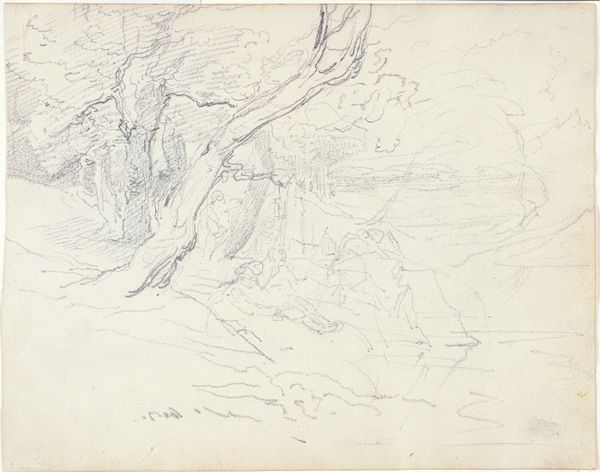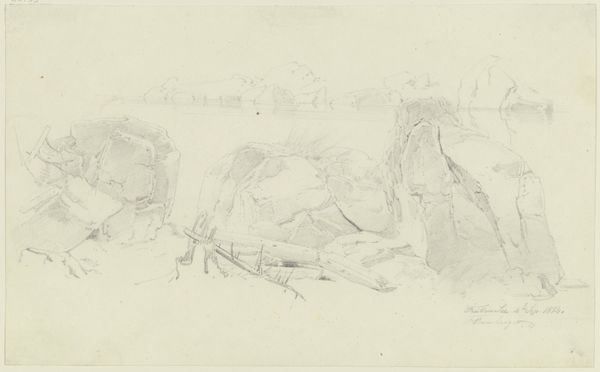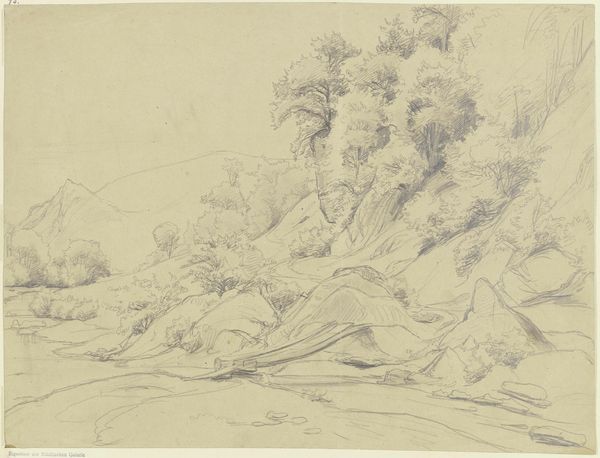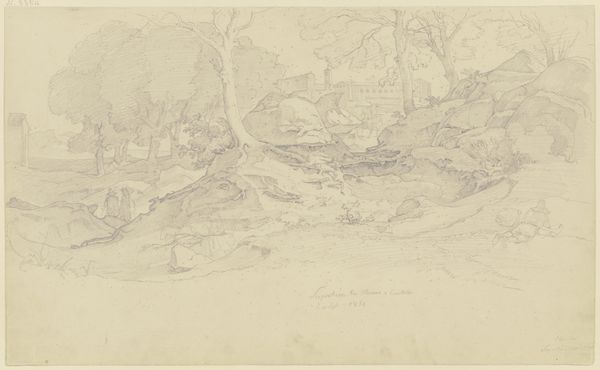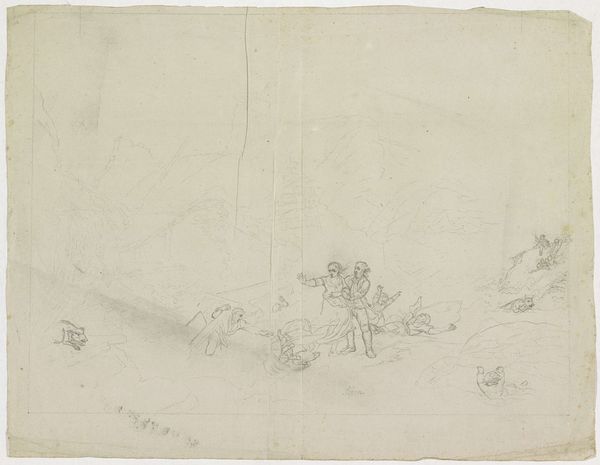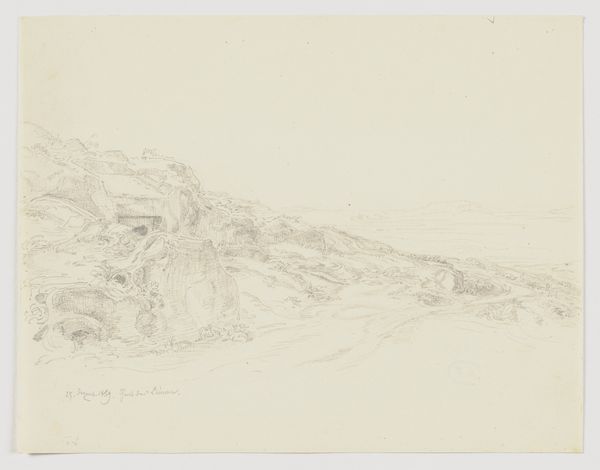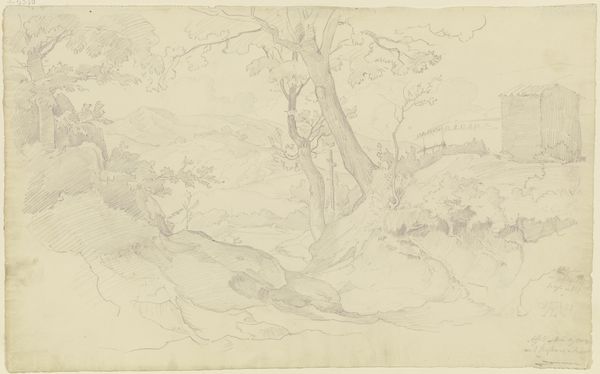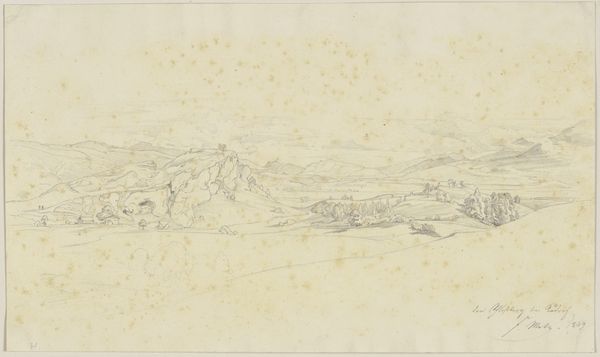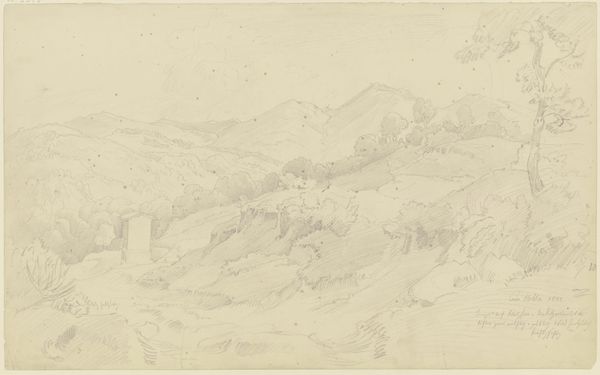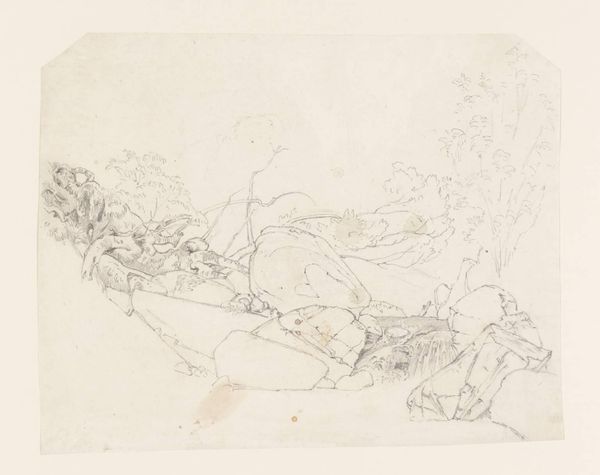
Copyright: Public Domain
Curator: Here we have Ernst Fries’ "River section near Massa," a pencil drawing created around 1822-1825. It’s currently held at the Städel Museum. Editor: My first impression is one of quiet observation. The light is incredibly soft; it almost feels like looking at a half-remembered dreamscape, rendered in the palest grays. Curator: That subdued atmosphere aligns perfectly with the Romantic period, particularly the German landscape tradition that Fries was a part of. We can consider the era's focus on capturing the sublime and evoking emotional responses through depictions of nature. Think about the broader political climate of the time: the post-Napoleonic era saw a rise in nationalism, and artists often turned to idealized depictions of their native lands. Editor: Right. And how landscapes served as a space to reflect national identity or a sense of belonging during upheaval. In Fries's drawing, I see an interesting contrast—the precision of the foreground with its clearly defined rocks, versus the almost hazy ambiguity of the background hills. It gives the impression of something both immediate and distant, personal and historical. The loose handling, to me, really creates a feeling of impermanence. Curator: Precisely! The sketch, made using pencil, speaks to the artistic practice of the time— sketching *en plein air* and its link to scientific observation. How are these new kinds of engagements shaping the reception of nature through art? Fries would’ve seen himself documenting and responding to his surrounding environment. The artwork may have functioned as a record of place, while feeding into the cultural and political contexts within the era. Editor: When thinking about how we receive the image now, two centuries later, and knowing the location of Massa, I start wondering about the relationship between the resources provided by that location and those who lived there and its potential connections to colonialism and industrialization. It is important to acknowledge the ways in which land, resources, and landscapes can be used by dominant social groups to achieve certain political or financial means. Curator: Yes, those interpretations add further critical layers. We see not only the aesthetic dimensions, but can also consider the landscape in relationship to land use and labour, which is incredibly relevant even now in the face of climate crisis and conversations around access and environmental justice. Editor: Exactly. It brings attention to land exploitation issues while engaging with Romantic landscapes. Fries’ delicate drawing, I realize, provides much room for conversation when recontextualized. Curator: Well said. I'll certainly keep your perspective in mind as I return to contemplate the piece myself.
Comments
No comments
Be the first to comment and join the conversation on the ultimate creative platform.
